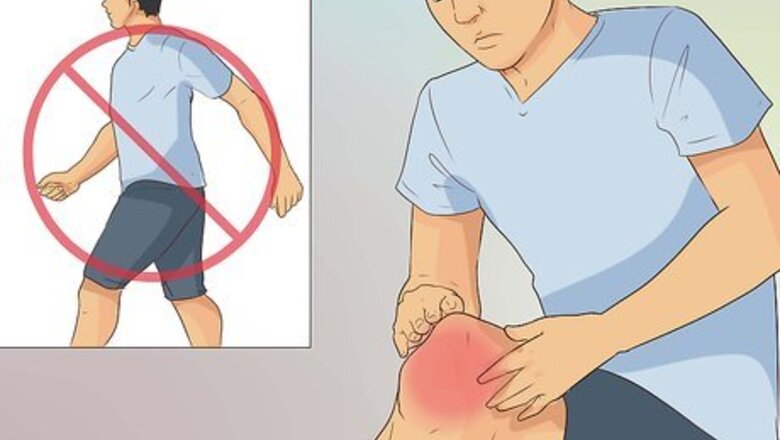
views
X
Trustworthy Source
Harvard Medical School
Harvard Medical School's Educational Site for the Public
Go to source
If you have been diagnosed with a knee sprain, you can follow a few simple steps to recover as soon as possible.
Following the P.R.I.C.E. Method
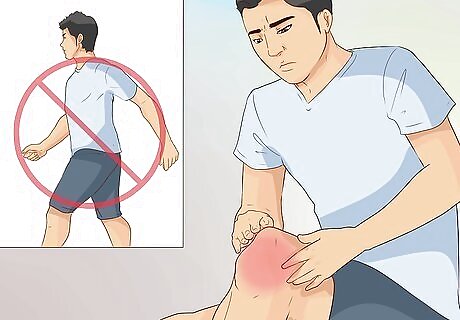
Protect your knee. As soon as you injure your knee, you need to protect it from further harm. When the sprain happens, do not continue to move your knee or perform the activity you were taking part in when you injured it. This will only cause your sprain to get worse. If at all possible, sit down immediately and take pressure off of your knee. If you are in a public place, have someone help you get to the doctor. You don't need to walk too much on your knee until you assess how bad your sprain is. See a doctor as soon as possible. Because it is the most popular method of treating a sprain, your doctor will likely tell you to follow the rest of the P.R.I.C.E. method after your visit. However, if it is a serious sprain, make sure you follow her instruction completely.

Rest your knee. Within the first 48 hours, the most important thing for you to do for your knee is rest it. This will give the ligament time to heal and repair itself. Your doctor will likely tell you to stay off of it as much as possible in the days after your injury. To accomplish this, he or she may give you crutches to use. You want to rest your knee just as you would for any muscle you've worked out—if you just did chest day and your chest hurt, you'd give yourself time for your body to heal. You should give yourself 3 or so days to let your body recover. Remember that as you get older, your ability to heal quickly diminishes. If your body still hurts after three days, don't jump back into regular activity. Your doctor may also recommend a splint or a brace if you have issues keeping your knee still in the first few days after your injury.
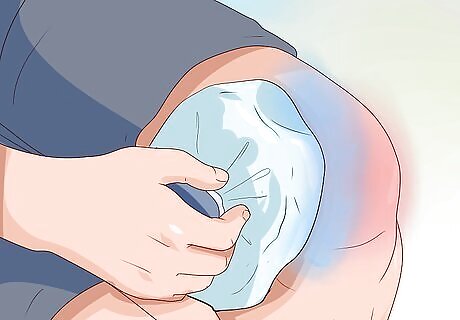
Ice your knee. In the first few days, you should ice your knee to help relieve inflammation and pain. Put ice cubes or crushed ice in a sealed plastic bag or take a bag of frozen veggies from the freezer. Wrap the bag in a towel or cloth. Place the ice pack on your knee for 20 minutes at a time. You can repeat four to eight times a day. Do not ice your leg for more than 20 minutes at a time. You could cause cold injury or frostbite if you do. You can also use a cold compress instead of ice. You should continue treating your knee with ice for 48 hours or until the swelling goes down.
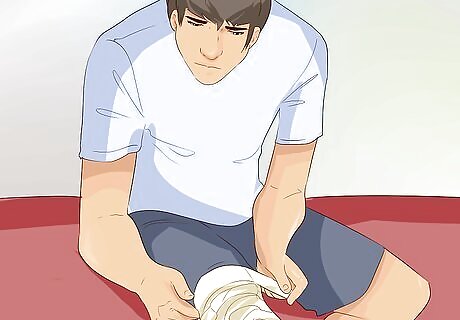
Compress your knee. To help reduce swelling, you should compress you knee in the days after your injury. You need to wrap your knee with an elastic bandage or band. Wrap the bandage tightly enough to support your knee and keep it from moving. However, make sure you do not wrap it so tight that it cuts off your circulation. Take off the bandage while you sleep. This gives the blood in your knee time to circulate freely and your knee will not likely move much while you sleep. You may be able to take the compress off after 48 hours. If you knee is still swollen, however, your doctor may advise you to keep compressing it.

Elevate your sore knee. During the days after your injury, you should elevate your leg as much as possible. Try to keep your knee above the level of your heart to decrease the blood flow and swelling to your knee. Sit back or lie down on your back. Place two or three pillows underneath your sprained knee to elevate it above your heart. The amount you need to elevate your knee will depend on your environment. If you are sitting up, you may need more pillows than when you are laying down.
Applying Additional Treatment Methods
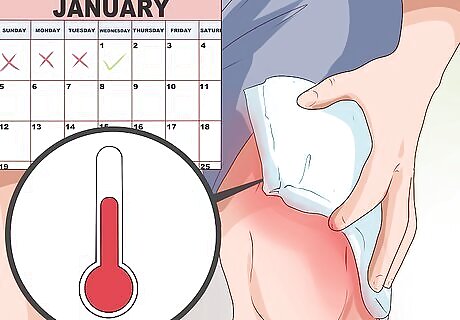
Apply heat after 72 hours. After you have taken care of your leg with the P.R.I.C.E. method for 48 – 72 hours, you can begin to incorporate a few additional treatments that will help your knee pain and swelling get better. Use a heating pad or hot compress on your knee to alleviate stiffness and pain. Apply heat for 20 minutes, four times per day or as needed. This will help loosen up the muscles in your knee that you have been resting for the three days prior to heating it. You can also apply heat to your knee in a sauna, whirlpool, hot bath, or hot tub. Do not heat before 72 hours have passed. You will actually do more harm than good if you heat too soon. The increased blood flow in your knee while it is still initially healing can cause it to bleed or swell more.

Take oral pain medication. While you are healing, over the counter pain medication can help you manage the pain involved. You can take ibuprofen or acetaminophen for the pain if you experience any that is too much for you to handle without drugs. Try common brands of ibuprofen such as Advil and Motrin and brands of acetaminophen such as Tylenol. You can also take anti-inflammatory medications such as naproxen. You can buy it over the counter in such brands as Aleve. Ask your doctor for prescription anti-inflammatory medication, if the pain and swelling in your knee lingers longer than a week.
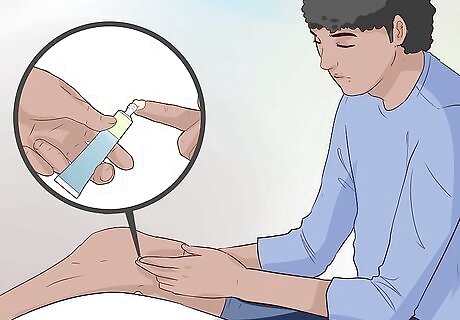
Try topical anti-inflammatory creams. If you don't want to take oral pain relievers, there are some topical creams that can help with the pain. You can buy creams with ibuprofen from your pharmacy. This method is best used when you have less pain because the topical version of ibuprofen does not get as much of the drug into your system, so it may not work on intense pain. There are other creams that are available by prescription only. Ask your doctor if you think it might be an option you'd like to try.
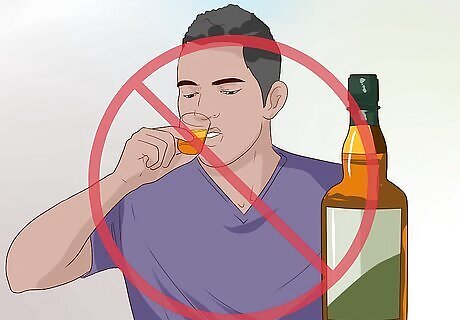
Avoid alcohol. While you are recovering, you should not drink any alcoholic drinks. This is especially true in the first few days after you get injured. Alcohol can decrease the healing capabilities of your body. It can also encourage inflammation and swelling. Ask your doctor before you start drinking alcohol again. You want to make sure your knee has healed enough that you won't deter your recuperation.
Rehabilitating Your Knee

Do exercises. Once you have healed enough to start moving your knee again, your doctor may give you exercises to help you get mobility back in your knee. The exercises will be aimed to help prevent stiffness, increase strength, improve range of motion, and increase the flexibility of the joints of your knee. You may be given exercises that focus on balance and strength. You need to do them several times a day to improve over time. The type of the exercises and the amount of time you will have to do them depends on the extent of your injury. You may need more if your severely sprained your knee. Ask you doctor how long you should do your exercises.
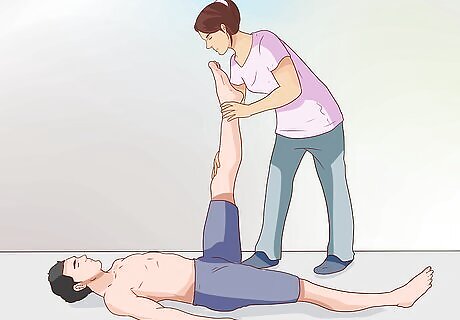
Take physical therapy if needed. If your injury was really bad, you may need to work with a physical therapist or do at home physical therapy for a little while after your injury. This is not common in most cases, but there are some cases where this is necessary to completely heal the knee ligaments and return your knee to its former state. The exercises you do will depend on you injury, but they are to help with stiffness, reduce any lingering swelling, and return your knee to its full range of motion without pain.
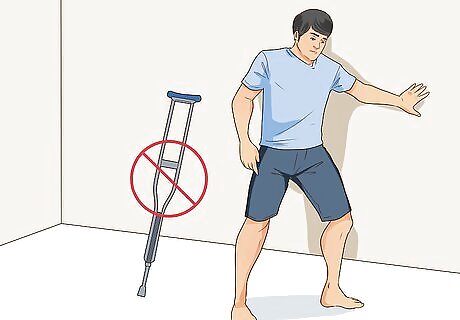
Slowly increase activity. A few weeks after your injury, your doctor may suggest you return to your normal everyday routine without the assistance of wraps, crutches, or braces. When this happens, it is likely that she will suggest you take it easy at first to test out your strength, flexibility, and range of motion after your injury. If you do not experience pain, you can go back to your normal level of activity, including sports and other physical activities.

Get surgery if necessary. In rare cases, your doctor may decide it is necessary that you have surgery. One of the main reasons for surgery is to repair your anterior cruciate ligament (ACL), which is the ligament inside your knee that helps is move it back and forth. Since it is such an integral ligament, if you rupture, tear, or injure this muscle, it needs to get fixed in the best way possible. It is even more common for athletes to need surgery on the ACL to ensure a return to previous range of motion and strength. You may also need surgery if you injured more than one ligament in your knee. It may be too difficult for your ligaments to repair themselves on their own. Surgery is typically the last resort. In most cases, all the other methods are tried first before surgery is even considered as an option.




















Comments
0 comment